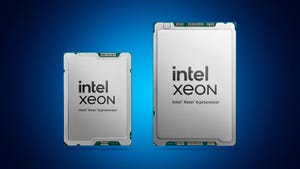Facebook’s New Data Center Cooling Design Means It Can Build in More PlacesFacebook’s New Data Center Cooling Design Means It Can Build in More Places
Water-efficient system developed to enable outside-air cooling in polluted, humid areas

Facebook today announced a new cooling system that will make some of its data centers more water and energy-efficient.
The social network, which prides itself in building environmentally friendly data centers, cools most of them using outdoor air and direct evaporative cooling systems. But in some locations, they must use indirect cooling systems to protect IT equipment from harsh environmental conditions, such as high levels of dust, extreme humidity, or elevated salinity, according to a Tuesday blog post.
In the blog post, Facebook unveiled a new indirect cooling technology it plans to start using in data centers it builds in the future. It features an advanced evaporative cooling system that uses water instead of air to cool data centers.
“When deployed, the new cooling will allow us to build highly water- and energy-efficient Facebook data centers in places where direct cooling is not feasible,” Veerendra Mulay, Facebook’s research and development mechanical engineer, wrote. “Based on our testing in several different locations, we anticipate the (new) system can reduce water usage by more than 20 percent for data centers in hot and humid climates and by almost 90 percent in cooler climates in comparison with previous indirect cooling systems.”
Using outside air for data center cooling, the approach known as “free cooling,” has been one of the biggest ways to reduce data center energy use. But air quality makes the approach almost infeasible. Data center operators in China, for example, have struggled for years with this issue, as high concentration of air pollutants in the country’s east have led to higher IT equipment failure rates.
Facebook currently uses indirect cooling systems in two locations worldwide, Mulay said in an interview with Data Center Knowledge. The new indirect cooling system – called the StatePoint Liquid Cooling (SPLC) system – will allow the company to consider building water- and energy-efficient data centers in areas that might not have been feasible before, he said.
“We evaluate the needs on a site-by-site basis,” he said about the choice of data center cooling design Facebook uses in each new location. “We look at the climate, the salinity in the air, and other conditions. But if we go indirect, this new technology is what we will use.”
Mulay said he expects data centers that use indirect cooling systems will continue to be a small percentage of Facebook’s overall data center count, but it will grow over time when it makes sense for the business.
“This is a huge step in our commitment to sustainability,” he added.
How the Cooling Technology Works
Facebook co-developed the new data center cooling technology with Nortek Air Solutions, a manufacturer of custom commercial HVAC systems. The two companies began work on what became SPLC in 2015.
Previous indirect cooling systems use two different air loops: an outside air loop and a processed data center air loop, Mulay said. The outside air is first cooled by evaporative cooling, and then that cold air cools the processed air used to cool the data center equipment.
With SPLC, a new loop – the “processed water loop” – is introduced. Instead of the traditional approach of using water to cool air, the new design uses air to cool water, which results in lower water consumption, according to Mulay.

The heart of the SPLC system is a liquid-to-air energy exchanger, where water is cooled as it evaporates through a membrane separation layer, he wrote in the blog post. The cold water then cools the air inside the data center and keeps servers at optimal temperatures.
“What happens is that your energy exchange happens in two places, instead of just one place,” Mulay explained in the interview. “You use outside air to produce cold water. That cold water then goes to your data center, where you will use the cold water to cool the processed air, and then the processed air is sent to the servers, so they can be cooled.”

Inside a StatePoint Technology Unit: The SPLC unit is primarily composed of the intake and exhaust dampers, filters, coils, fans, and the membrane exchanger.
The SPLC technology works in three modes to optimize water and power consumption.
“When outside air temperatures are low, the SPLC’s most energy- and water-efficient mode uses that air to produce cold water. When outside air temperatures rise, the SPLC system will operate in an adiabatic mode, in which the system engages the heat exchanger to cool the warm outside air before it goes into the recovery coil to produce cold water,” Mulay wrote. “In hot and humid weather, the SPLC will operate in super-evaporative mode, where outside air is cooled by a pre-cooling coil and then used to produce cold water.”
Nortek owns the patent for the SPLC technology. That means other companies – not only Facebook – can contact Nortek to use it in their data centers, Mulay added.

The schematic demonstrates the SPLC cooling scheme for a data center. The SPLC units are deployed on the rooftop. These SPLC units produce cold water, which is then supplied to the Fan Coil Wall (FCW) unit. These FCW units use the cold water supplied by the SPLC units to cool the servers. The hot water from these FCW units is returned to SPLC units, where it will be cooled and recycled through the system.
About the Author
You May Also Like









